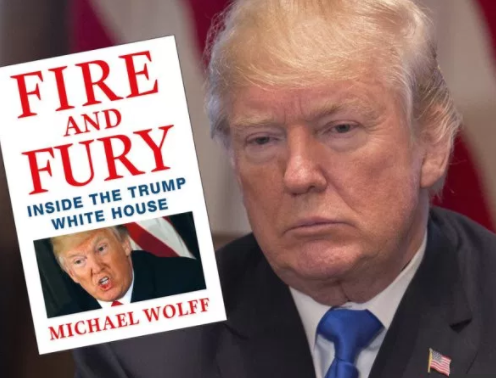During the first day of the 3rd Katipunan Conference sponsored by the Strategic Studies Program (with which I am a fellow) yesterday, I asserted that a new cold war is on in the Indo Asia Pacific Theater. And in fact, I am just echoing the views of very young and very junior scholars I have read way back in 2015 like Hendricks (2015)
_________________________________________________________________________
What was a Chinese military plane doing in South Korea’s special air defence zone for 4 hours?
http://www.ibtimes.co.uk/what-was-chinese-military-plane-doing-south-koreas-special-air-defence-zone-4-fours-1664076?utm_source=social&utm_medium=facebook&utm_campaign=%2Fwhat-was-chinese-military-plane-doing-south-koreas-special-air-defence-zone-4-fours-1664076
__________________________________________________________________________________
What’s going on in our neck of the woods?
A new cold war, that is!
In the Indo Asia Pacific theater with China and the US as the main protagonists.
An appropriate (even if old) theory that could help better understand the new East Asian strategic environment exists. The Power Transition theory is a theory about the cyclical nature of war, in relation to power (of states) in international relations. Created by A.F.K. Organski, and originally published in his textbook, World Politics (1958), contemporary power transition theory describes international politics as a hierarchy, with different degrees of power between states. The objective of the theory is to investigate the cyclic condition of wars, and how transition of power in terms of machtpolitik affect the occurrence of these wars.
The principal predictive power of the theory is in the likelihood of war and the stability of alliances. War is most likely, of longest duration and greatest magnitude, when a challenger (a revisionist power; one of the great powers) to the dominant power (the global hegemon) enters into approximate parity with the dominant state and is dissatisfied with the existing system. Similarly, alliances are most stable when the parties to the alliance are satisfied with the system structure. This leads to the view that when the balance of power is unstable (i.e. one or two nations have taken a dominant role in geopolitics), the likelihood of war is greater.
According to Organski:
An even distribution of political, economic, and military capabilities between contending groups of states is likely to increase the probability of war; peace is preserved best when there is an imbalance of national capabilities between disadvantaged and advantaged nations; the aggressor will come from a small group of dissatisfied strong countries; and it is the weaker, rather than the stronger; power that is most likely to be the aggressor.
Using Organski’s theory, China can be characterized as a ‘revisionist’ power dissatisfied with the existing balance of forces in the world as well as in Asia. Meanwhile, the United States is a ‘status quo’ power (or a stand patter) working to preserve its hegemony. It is joined by other status quo powers like Japan, South Korea, and Australia. Since it does not share US interests and preferences, the Russian Federation under President Vladimir Putin is China’s natural ally.[1] The same is true with Pyongyang since Seoul is on the opposing side. India is in a predicament since it shares a land border with China and fought a brief border war with the latter in the 1960s. Geopolitical realities may force India to either align with China or opt for neutrality in the conflict.
Thus, a new cold war is afoot in East Asia (or the eastern Pacific rim) involving great powers (both status quo and revisionists) plus their allies.
Note that Russia had agreed to sell its most advanced S-400 missile systems to China. Please see <http://www.themoscowtimes.com/business/article/china-and-russia-sign-contract-for-s-400-missile-systems/519010.html>.
A similar cold war is fought between the US and the Russian Federation in, as usual the European and MENA theater.
Of course, they have proxies.
But this new cold war is quite different, qualitatively different than the Cold War between the US and the USSR that ended in 1989-1991.
China and US are not starightfoward enemies.
The US and the Soviet Union were.
China and the US are, in millenial speak, “frenemies”.
They are enemies and rivals in the strategic realm.
But even in the strategic realm, they need to cooperate so as not to blow the world up in smoke and cinders.
They are friends in the economic realm sharing interest in keeping the world economy an open one.
However, as economic powers, they also compete and rival each other.
China was and is the biggest beneficiary of contemporary globalization, of the liberalization of the world’s financial markets and FDI rules.
_______________________________________________________________________
Want to escape poverty? Replace pictures of Jesus with Xi Jinping, Christian villagers urged | South China Morning Post
http://www.scmp.com/news/china/policies-politics/article/2119699/praise-xi-jinping-not-jesus-escape-poverty-christian
________________________________________________________________________
In the process, the US steadily lost jobs and this gave (or gives) a fillip to protectionist sentiments exploited by Trump and his kind specially among blue collar workers and within the Rust Belt and the South.
The war is fought because of the steady undermining of the post-World War II world order.

The war is fought while the 4th Industrial Revolution is disrupting our lives, our economies, our ways of life, our politics, and our consciousness.
Fortunes are being made while misery and mayhem are widespread.
For this reasons, all gaps seem to be widening.
There is a great disconnect between competing truths. There is mass confusion, disaffection, and tumult.
The world is poised for a major shift.









